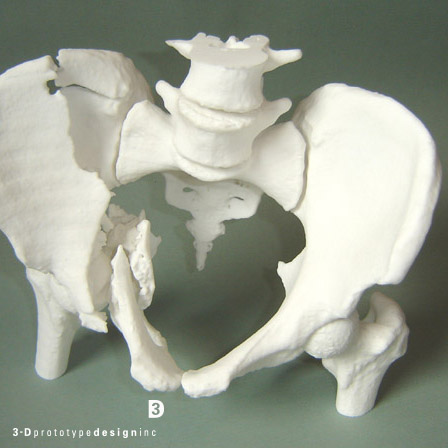
Large scale manufacturing isn’t the only feasible function of 3D prototyping. Not by a longshot. Due to groundbreaking medical scanning and imaging technology, recreation of internal biological objects has become more than just science fiction, it’s become a reality. The key to creating these three-dimensional models lies in our ability to create exact replicas of bones based on medical CT scans or MRIs of the subject.
Once the data has been compiled into a Computer Aided Design (CAD), it then becomes just like any other 3D prototype, and it undergoes the same Selective Laser Sintering process that we would use to create a prototype of a part or product. We would slice the model into layers and physically build the model one layer at a time, each layer measuring at .004″ thick until the prototype is completed.
Creating your own custom 3D medical model has a number of distinct advantages, the primary of which is your ability to display an internal problem in an easy-to-comprehend fashion. You can replicate an injury, and even show patients how they might benefit from surgeries that would implement pins, screws, and rods. Nothing demonstrates a post-surgery increase in mobility better than a working model.
On the other hand, medical 3D models can also play a hand in the courtroom in order to easily illustrate an injury. By utilizing a model instead of X-Rays and CT scans, you can give further meaning to each preceding and even increase settlement values by assisting medical experts in identifying exactly what’s wrong with your client’s body.

